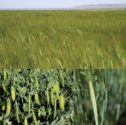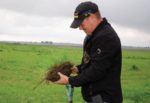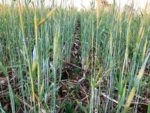Advertise Follow Us
Cover Crops
What I’ve Learned from No-Tilling
No-Till Success, Improved Soil Health Means ‘No More’ Chemical Fallow
This northern Montana couple grazes beef and improves soil life with farm-produced microorganisms that they grow, extract and apply to eight different no-tilled crops.
Read More
No Stone Unturned in Quest for Healthy Soils
Northwest Ohio no-tiller solves soil health puzzle with plant diversity, cover crops and heavy focus on water quality.
Read More
Cover Crop Nutrients Keep Money in No-Tiller Pockets
Rick Clark knows how much you can save using cover crops, and he’s got numbers.
Read More
No-Till Farmer Influencers & Innovators
[Podcast] Ag Consultant Joe Nester Talks About Retaining P
For this episode of the No-Till Farmer Influencers & Innovators podcast, brought to you by SOURCE®️ by Sound Agriculture, Ag consultant Joe Nester says phosphorus (P) is leaving soil. In this presentation from the National No-Tillage Conference, Nester covers how to measure and recover P, as well as the issues that arise when too much P shows up in the wrong place.
Read More
Beat Glyphosate-Resistant Weeds by Planting Green
In the fight against increasing herbicide resistance, the practice of planting green into a living cover crop offers weed suppression and potential money savings.
Read More
Applying Manure with a Dragline Helps No-Tillers with Cover Crop Termination
Growers from Perrysville, Ohio, utilize manure from their 650-cow dairy to maintain high-yielding double crops, and feed for their herd.
Read More


.png?height=125&t=1666625469&width=150)











